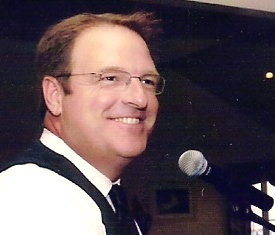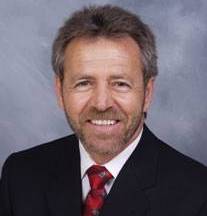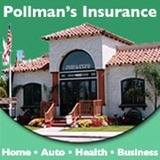|
News NRDC & Coalition For Safe Environment Tell Port of LB & Mayor Foster: Curtail Port's Poisons Linked To Diesel Or We'll Ask Fed'l Court To Enforce Lowest Attainable Rates For Diesel Particulates...With No Net Increase Pending Trial
(Feb. 7, 2008) -- Lawyers for the Natural Resources Defense Council (NRDC) and the Wilmington-based Coalition For A Safe Environment (CFASE) have given LB Port officials ninety days written notice "to remedy the imminent and
substantial endangerment to public health and the environment caused by disposal of arsenic, cadmium, nickel, inorganic lead, antimony compounds, beryllium compounds, cobalt compounds, manganese compounds, mercury compounds, phosphorus, selenium, and other compounds onto the land and into water while attached to or associated with
diesel particulate matter" or a face a federal court suit to enforce the lowest attainable rates for diesel particulates on Port operations.
"[T]he Port's intention to address the imminent and substantial danger to health and the environment of its operations is not the same as actually abating the harm," says the twelve-page letter addressed to LB Mayor Bob Foster, LB Harbor Commission President Mario Cordero and Port of LB Executive Director Richard Steinke giving (extended text below).
The two groups indicate plans to sue under the Resource Conservation and Recovery Act (RCRA) which empowers a federal court to order a polluter to stop causing harm to the public and to the environment if an imminent and substantial endangerment can be shown.
"[N]o construction or expansion projects should commence on Port land (or with Port approval) unless the Port proves to the satisfaction of the District Court that such activities will not at any time increase the level of hazardous
diesel particulates emanating from the Port," the letter states...and cites Port-desired growth as a pollution factor:
Port operations are growing -- creating mounting concerns that Port pollution will continue to increase in the future...In particular, the Port of Long Beach has especially ambitious expansion plans, including the Pier S expansion project, the Middle Harbor Redevelopment project, and expansion of the Gerald Desmond Bridge...[A] recent cumulative impacts analysis in the Environmental Impact Statement/Environmental Impact Report for the TraPac Container Terminal Expansion project at the Port of Los Angeles indicates that the Port of Long Beach has more than 9 major expansion projects in the queue.
The letter states, "We recognize that the Port has existing plans to reduce the harmful emissions emanating from its operations, but due to the Port's failures to implement its plans, the pollution levels are rising. We have no reason to believe this situation will turn around absent this litigation."
Regarding PoLB's "Clean Air Action Plan," the letter states:
[T]he Port's intention to address the imminent and substantial danger to health and the environment of its operations is not the same as actually abating the harm. Indeed, the Port has failed to meet a number of critical deadlines under the Clean Air Action Plan. For example:
- By first quarter 2007, the Port was to adopt an implementation plan for reducing
emissions from port trucks.
- By Spring 2007, the Port was to adopt "San Pedro Bay Standards" that would
commit the Port to reducing air pollution to levels that would help the region
attain federal air quality standards.
- By second quarter 2007, the Ports was to evaluate the use of "tariffs" to require
port tenants to use cleaner marine fuels and bring any appropriate tariff to its
Board for adoption by third quarter 2007.
The Port has failed to meet the deadlines outlined in its environmental policies, making intervention from the public necessary to ensure that the Port’s operations are in compliance with environmental and common law.
The groups' letter calls for what LB area grassroots activists have repeatedly urged, and the City of LB previously supported -- until State Sen. Alan Lowenthal abandoned it (in favor of Port capacity expansion): a "no net increase" in pollution guarantee.
"[N]o construction or expansion projects should commence on Port land (or with Port approval) unless the Port proves to the satisfaction of the District Court that such activities will not at any time increase the level of hazardous
diesel particulates emanating from the Port," the letter state.
Pending trial, the Port must prevent increases in emissions of RCRA hazardous
wastes. Specifically, this means that the levels of diesel particulates may not increase
from Port operations (over the data from the same month in the prior year) until the trial
is completed. During that time, no construction or expansion projects should commence
on Port land (or with Port approval) unless the Port proves to the satisfaction of the
District Court that such activities will not at any time increase the level of hazardous
diesel particulates emanating from the Port. In addition, no increases in throughput over
the previous year’s levels would be permitted without such proof first being made.
On a permanent basis, the Port must achieve the lowest attainable rates for diesel
particulates. The Port will be treated as a single entity, and its diesel particulate
emissions shall not exceed those that would be achieved if every source category at the
Port (i.e., ocean going vessels, heavy duty trucks, locomotives, cargo handling equipment
and harbor craft) operated at the lowest attainable rates for diesel particulates. Periodic
benchmarks and re-assessments will be necessary to monitor compliance and to account
for improvements in technology.
"The Port of Long Beach has a good written plan to clean up its pollution, but its plan is being ignored by the Long Beach Harbor Commissioners and staff," said Melissa Lin Perrella, a lawyer with NRDC in a release. "We need a plan with enforceable deadlines. If the port won't agree to one, we will ask a federal court to order one."
LBReport.com posts salient portions below with its full text on a link following (text below omits footnotes; italics reflect original).
Re: 90-Day Notice of Intent to Initiate Action Under the Resource
Conservation and Recovery Act, 42 U.S.C. §§ 6901 et seq.
This letter provides notice to the City of Long Beach, the Long Beach Board of
Harbor Commissioners, and the Port of Long Beach (collectively the "Port") under 42
U.S.C. § 6972(b) of the intent of the Natural Resources Defense Council ("NRDC") and
the Coalition For A Safe Environment ("CFSE"), for themselves and on behalf of their
members who live or work near the Port, or who are affected by the Port’s improper
disposal of solid wastes, to file a complaint under the Resource Conservation and
Recovery Act, 42 U.S.C. §§ 6901 et seq. ("RCRA"), to remedy the imminent and
substantial endangerment to public health and the environment caused by disposal of
arsenic, cadmium, nickel, inorganic lead, antimony compounds, beryllium compounds,
cobalt compounds, manganese compounds, mercury compounds, phosphorus, selenium,
and other compounds onto the land and into water while attached to or associated with
diesel particulate matter (collectively referred to as "diesel particulate hazardous waste"
or "diesel PM") that the Port is allowing to be disposed of through its operations. Unless
we are confident that the Port has eliminated the substantial and imminent endangerment
to public health and the environment caused by such disposal, we will file suit in federal
court after 90 days have expired from the date of this letter.
I. The Port of Long Beach Emits High Levels of Diesel Particulate Hazardous Waste
Diesel particulate hazardous waste emanating from operations at the Port of Long
Beach is exacting a huge toll on local residents and the environment...
In September, 2007, the Port of Long Beach released its emissions inventory for 2005,
which found that its operations alone emitted 1,008.4 tons per year of diesel PM, 1,104.5
tons per year of PM10, and 928.2 tons per year of PM2.5. The bulk of these emissions are
from oceangoing vessels and heavy duty diesel trucks that the Port, as a landlord, allows
to use Port property.8 These emissions from Port operations disproportionately impact
low income communities and communities of color.
Additionally, Port operations are growing -- creating mounting concerns that Port
pollution will continue to increase in the future. Studies estimate that freight volumes
will double or triple in the Los Angeles region over the next two decades. In particular,
the Port of Long Beach has especially ambitious expansion plans, including the Pier S
expansion project, the Middle Harbor Redevelopment project, and expansion of the
Gerald Desmond Bridge. In fact, a recent cumulative impacts analysis in the
Environmental Impact Statement/Environmental Impact Report for the TraPac Container
Terminal Expansion project at the Port of Los Angeles indicates that the Port of Long
Beach has more than 9 major expansion projects in the queue.
We recognize that the Port has existing plans to reduce the harmful emissions
emanating from its operations, but due to the Port’s failures to implement its plans, the
pollution levels are rising. We have no reason to believe this situation will turn around
absent this litigation.
II. Port of Long Beach Emissions Present an Imminent and Substantial Endangerment to Public Health and to the Environment
The RCRA hazardous wastes which the Port is allowing to be disposed of through
its operations have well-documented, serious effects on human health and the
environment...
[enumerates multiple toxics and their health effects]
With respect to diesel particulate hazardous waste, numerous scientific studies
have documented the human health effects of exposure, including specific studies on the
effects on people who live and work near the Port of Long Beach. Diesel particulate
hazardous waste causes cancer risk, premature death, asthma attacks and other
respiratory symptoms, among other health impacts. The most vulnerable populations
are children and the elderly who may have other serious health problems.
There are a number of human exposure pathways for diesel particulate hazardous
waste, including dermal contact and the eating of contaminated food. CARB found that:
Airborne pollutants can deposit onto surfaces and waterways, providing
another source of exposure. For example, goods movement activities
contribute to non-point source runoff that contaminates coastal and bay
waters with a number of toxicants, including PAHs
[polycyclic/polynuclear aromatic hydrocarbons], dioxins, and metals.
Exposures to pollutants that were originally emitted into the air can also
occur as a result of dermal contact, ingestion of contaminated produce,
and ingestion of fish that have taken up contaminants from water bodies. These exposures can all contribute to an individual’s health risk. In some cases, the risks from these kinds of exposure can be greater than the risks
from inhalation of the airborne chemicals.
CARB reported that the cancer risk from inhalation of diesel PM for residents of
communities next to the Port of Long Beach was greater than 500 in a million, a risk 500
times higher than what the federal government considers acceptable.26 The areas with
risk of over 500 in a million include about 2,500 acres where 53,000 people live. "The
area where the risk is predicted to exceed 200 in a million is also very large, covering an
area of about 29,000 acres where over 400,000 people live." "At the edge of the
modeling study area, referred to as the modeling receptor domain, the potential cancer
risk" is still as high as 100 in a million. By way of context, in order to receive a permit
in the South Coast Air Basin for a new facility, the cancer risk cannot exceed 10 in a
million.
Recently, the South Coast Air Quality Management District ("SCAQMD")
released its draft Multiple Air Toxics Exposure Study III ("MATES III study"), which
concluded that diesel particulates are the dominant source of cancer risk from inhalation
of air toxics in the South Coast Air Basin, accounting for an estimated 84% of the risk. 31
The MATES III study further identified the area near the ports as having the highest
concentration of diesel PM in the South Coast Air Basin -- a fact that has remained
unchanged since SCAQMD’s MATES II study in 1998/1999.
Additionally, in December 2007, NRDC and the Coalition for Clean and Safe
Ports released a study on the exposure of port truck drivers to diesel exhaust while
serving the Port of Oakland. That study, which included measurements of pollution
inside the cab of trucks while drivers were working, found that port drivers are exposed
to increased health risk by up to 2,600 excess cancer cases per million drivers—double
the level considered acceptable by the Occupational Safety and Health Administration,
and up to 2,000 times greater than the level typically considered acceptable by state and
federal environmental protection agencies.32 Drivers hauling freight to and from the Port
of Long Beach likely experience similar or greater risks.
In addition to increased cancer risk, numerous studies have documented a wide
range of other adverse health impacts due to exposure to fine particulates. Such impacts
include increased risk for cardiovascular disease such as atherosclerosis, increased heart
attacks, increased emergency room visits for acute health events, birth defects, low birth
weights, premature births, and increased rates of death. In 2005, CARB estimated that
diesel exhaust from freight transport in California contributes to 2,400 premature deaths
statewide every year, with 50% of these deaths occurring in the South Coast Air Basin.
III. The Port of Long Beach Has Failed to Remedy the Problem of Hazardous Waste Emanating From its Operations
In 2003, the Port consolidated several environmental initiatives under one
umbrella called the Healthy Harbor Program, which included emphasis on air, water,
wildlife, and soil/sediment. In January of 2005, the Port adopted its Green Port Policy,
which included the goals to "[r]educe harmful air emissions from Port activities";
"[i]mprove the quality of Long Beach Harbor waters"; and "[r]emove, treat, or render
suitable for beneficial reuse contaminated soils and sediments in the Harbor District."
And in 2006, jointly with the Port of Los Angeles, the Port passed a Clean Air Action
Plan. However, the Port’s intention to address the imminent and substantial danger to
health and the environment of its operations is not the same as actually abating the harm.
Indeed, the Port has failed to meet a number of critical deadlines under the Clean Air
Action Plan. For example:
- By first quarter 2007, the Port was to adopt an implementation plan for reducing
emissions from port trucks.
- By Spring 2007, the Port was to adopt "San Pedro Bay Standards" that would
commit the Port to reducing air pollution to levels that would help the region
attain federal air quality standards.
- By second quarter 2007, the Ports was to evaluate the use of "tariffs" to require
port tenants to use cleaner marine fuels and bring any appropriate tariff to its
Board for adoption by third quarter 2007.
The Port has failed to meet the deadlines outlined in its environmental policies, making
intervention from the public necessary to ensure that the Port’s operations are in
compliance with environmental and common law. Moreover, such compliance will
significantly reduce harm to human health and the environment. Further, litigation is
necessary to remove any residual harm that may result after full implementation of the
Port's policies.
IV. The Port of Long Beach’s Operations Violate the Resource Conservation and Recovery Act
The citizen suit provision of RCRA, 42 USC § 6972(a)(1)(B), provides for
liability against: "any person . . . who has contributed or is contributing to the . . .
handling, storage, treatment, transportation or disposal . . . . [of] solid or hazardous waste
. . . [that] may present an imminent and substantial endangerment to health or the
environment." We intend to prove at trial that each of these elements is present with
respect to the Port:
[enumerates items specified in statute]
V. Steps That the Port Can and Must Take Now To Reduce Its Endangerment of Public Health
Pending trial, the Port must prevent increases in emissions of RCRA hazardous
wastes. Specifically, this means that the levels of diesel particulates may not increase
from Port operations (over the data from the same month in the prior year) until the trial
is completed. During that time, no construction or expansion projects should commence
on Port land (or with Port approval) unless the Port proves to the satisfaction of the
District Court that such activities will not at any time increase the level of hazardous
diesel particulates emanating from the Port. In addition, no increases in throughput over
the previous year’s levels would be permitted without such proof first being made.
On a permanent basis, the Port must achieve the lowest attainable rates for diesel
particulates. The Port will be treated as a single entity, and its diesel particulate
emissions shall not exceed those that would be achieved if every source category at the
Port (i.e., ocean going vessels, heavy duty trucks, locomotives, cargo handling equipment
and harbor craft) operated at the lowest attainable rates for diesel particulates. Periodic
benchmarks and re-assessments will be necessary to monitor compliance and to account
for improvements in technology. To achieve the lowest attainable rates for diesel
particulates, the Port must adopt, at a minimum, the following measures:
Ocean-going vessels:
(1) Low sulfur marine fuel:
Within six months, ensure 100% compliance and enforcement of the use of 2,000
ppm low sulfur fuel for marine auxiliary and main engines within 40 nautical
miles of the California coast; and
By January 1, 2010, ensure 100% compliance and enforcement of the use of 1,000
ppm low sulfur fuel for marine auxiliary and main engines within 40 nautical
miles of the California coast.
(2) Alternate Marine Power ("AMP"):
The Port shall require 50% of ship calls to use AMP by 2009 and 80% by 2010.
By 2010, all ships capable of using AMP must use AMP while at berth.
(3) New Vessels:
The Port should require the shipping fleet calling at its wharves and terminals to
meet a 30% reduction of oxides of nitrogen ("NOx") and PM (over 2007 levels)
by 2014, and a 70% reduction of NOx and 50% reduction of PM (over 2007
levels) by 2023. This could be achieved through the use of various technologies
such as selective catalytic reduction, humid air motors, direct water injection, and
particulate filters.
Construction Equipment (Greater than 25 horsepower):
Equipment greater than 25 horsepower must:
(1) Meet current emission standards and
(2) Be equipped with Best Available Control Technology ("BACT")42 for emissions
reductions of PM and NOx, or
(3) Use an alternative fuel such as natural gas or biodiesel.
Port-serving Diesel Trucks:
- Within 6 months, a fully developed truck replacement plan with a permanent
funding mechanism must be in place so that the following schedule will be met or
exceeded and suitable repair and replacement of the truck fleet will be
guaranteed:
| 2008 | 40% (2007 USEPA); 10% (2010 USEPA) |
| 2009 | 55% (2007 USEPA); 20% (2010 USEPA) |
| 2010 | 55% (2007 USEPA); 45% (2010 USEPA) |
| 2011 | Same as 2010 |
| 2012 | Same as 2010 |
| 2015 | All trucks either 2010 USEPA or zeropolluting (see below) |
The plan should include a methodology for scrapping the replaced trucks so that
they are not used to pollute some other location. In addition, the Port must adopt
a sustainable program that will strengthen the drayage truck market and ensure
newer trucks are well-maintained and operated efficiently.
- By 2015, all off-port drayage to rail yards must be by zero-polluting vehicles.
Rail Operations
- All locomotives coming onto Port property must be equipped with diesel
particulate filters or equivalent by 2014.
- All locomotives coming onto Port property must be equipped with U.S. EPA tier
3 engines within four years of adoption of those standards.
Cargo Handling Equipment
- All yard tractors must run on alternative fuels and meet U.S. EPA tier 4 non-road
standards or 2007 on-road standards, effective immediately.
- All other cargo handling equipment (e.g., forklifts, top picks, side picks, reach
stackers, and straddle carriers) must (1) meet current emissions standards and (2)
be equipped with BACT for emissions reductions of NOx and PM, or (3) use an
alternative fuel such as natural gas or biodiesel.
- Convert all diesel powered RTG cranes to hybrid systems including flywheel,
battery or other energy storage devices.
Harbor Craft
- All harbor craft serving the Port must have engines meeting U.S. EPA tier 2
standards.
- All harbor craft serving the Port must be retrofitted with best available Verified
Diesel Emission Control Strategies ("VDECS") by 2012.
- All harbor craft serving the Port must employ U.S. EPA tier 3 standards or
demonstrate equivalent emission reductions through VDECS within four years of
adoption of those standards.
- All harbor craft serving the Port must verify that shorepower is used during any
instances of power utilization while docked.
VI. Preliminary and Permanent Injunctions; Duty to Preserve Evidence
We invite the Port to discuss with us a resolution of the RCRA issues on a Portwide
basis. Unless these issues are resolved within 90 days of the date of this letter, we
will file suit in federal district court under RCRA seeking preliminary and permanent
injunctive relief to end the imminent and substantial endangerment of public health
which the Port is allowing to occur.
This letter also serves to remind you of your obligations under federal law to
preserve materials that you know, or reasonably should know, might be relevant to the
matters discussed in this letter, could lead to the discovery of admissible evidence, or are
likely to be requested during discovery. These materials include, without limitation,
information now existing or existing in the future in electronic format.
We look forward to your response.
The letter is signed by David Pettit, Attorney for NRDC; and Angela Johnson Meszaros, Attorney for CFSE.
To view the letter in full, click here.
Developing.
Return To Front Page
Contact us: mail@LBReport.com
|

144 Pine Ave.
Straight Talk w/ Art Levine
TV On-Demand



 Mike & Kathi Kowal know Los Cerritos, Bixby Knolls, Cal Hts. and beyond. Click to learn more Mike & Kathi Kowal know Los Cerritos, Bixby Knolls, Cal Hts. and beyond. Click to learn more

For Your 2008 Wedding & Special Events, Bill Lovelace Entertainment (Wedding Entertainment Planning A Specialty). Info, Click Here

Carter Wood Floors, a LB company, will restore your wood floor or install a new one. Enhance your home. Click pic.

Preserve Your Family's Most Precious Photos and Videos on DVD. Click For Info
|









